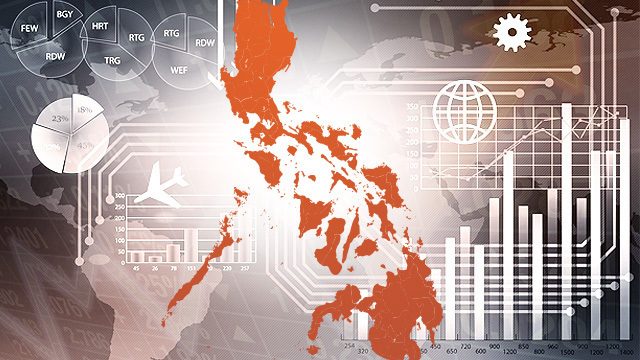SUMMARY
This is AI generated summarization, which may have errors. For context, always refer to the full article.

MANILA, Philippines – The Philippine economy is expected to grow more than 7% in the first 3 months of 2018, fueled by higher foreign investments, employment, and manufacturing output, among others.
That’s according to a report by the University of Asia and the Pacific (UA&P) as well as First Metro Investment Corporation, the investment banking arm of the Metrobank Group.
“Superb annual job growth to January 2018, record $10-billion foreign direct investments, and strong finish for infrastructure in 2017 all point to an acceleration in the growth path,” First Metro president Rabboni Arjonillo said in a note on Monday, April 2.
“Significant upticks in the manufacturing sector and capital goods imports in January add to our optimism of above 7% GDP growth in [the 1st quarter of] 2018,” he added.
Capital goods imports surged by 8.4% in December 2017, while the manufacturing sector posted 21.9% growth in January 2018.
The March 2018 edition of UA&P and First Metro’s Market Call showed that the over 2.4 million jobs created from January 2017 to January 2018 as well as strong infrastructure spending “should bolster domestic demand.”
Money sent home by overseas Filipinos reached $3 billion last December, setting a new monthly record.
Cause of concern
The report by UA&P and First Metro, however, flagged inflation, or the movement of prices of basic goods and services, as a concern, after it hit a new 3-year high in February. (READ: EXPLAINER: How the tax reform law affects Filipino consumers)
Using base year 2012, inflation in February climbed faster to 3.9%, driven by higher prices for fuel and commodities affected by the Tax Reform for Acceleration and Inclusion (TRAIN) law.
Six out of 11 product groups posted faster price increases in February, led by alcoholic beverages and tobacco as well as food and non-alcoholic beverages indices, which rose by 4.7 and 0.4 percentage points, respectively.
Higher excise taxes on cigarettes and the new excise tax on sweetened beverages contributed to this jump, according to the report. “The increase in prices of these goods also led to a higher increment in the restaurants and miscellaneous goods and services index.”
The Philippine Statistics Authority (PSA) in March released the rebased consumer price index (CPI) series, along with the 2006-based series.
But for July 2018 onwards, the PSA will only release the rebased CPI (2012). Under the 2006 CPI, inflation in February 2018 stood at 4.5%.
UA&P economist Victor Abola said the 3.9% inflation rate, using base year 2012, is more accurate than the 4.5% in February.
“Rebasing to a more recent period (year, in this case) is a standard procedure because the consumer’s market basket changes through time,” Abola said in the report.
He said that in July 2011, the then-National Statistics Office announced that starting June 2011, the new base would be used and the 2000-based CPI was to be released simultaneously until December 2011.
“An important reason for this outcome is that CPIs tend to be overstated. This is because new, cheaper, and more features are not immediately included in the CPI survey since they were not in the original market basket,” Abola said. – Rappler.com
Add a comment
How does this make you feel?
There are no comments yet. Add your comment to start the conversation.